The question of exhibiting art online has lingered since the early years of internet art. Last month Mike Golby and Jillian Kay Ross entered the conversation with their inaugural exhibition FREE 4 ALL at Barmecidal Projects. Barmecidal Projects is an entirely digital 3D gallery that is a virtual replica of Mathew Marks gallery in New York. FREE 4 ALL, which ran from April 16th- May 16th with an accompanying opening at Butcher Gallery in Toronto, features work by Alex Mcleod, Amalia Ulman, Arielle Gavin, Brad Tinmouth, Brian Khek, Danielle Bessada, David Hanes, Emily Jones, Georgia Dickie, Iain Ball, Jennifer Chan, Jillian Kay Ross, Jon Rafman, Justin Bochek, Jónó Mí Ló, Jarrod Wilson, Kaitlin Till- Landry, Lauren Brick, Lauren Elder, Lee Ormerod, Liam Wylie, Lili Huston- Herterich, Mike Goldby, Orlando Orellano, Rachael Milton, Shelbi Chew, and Tara Downs.
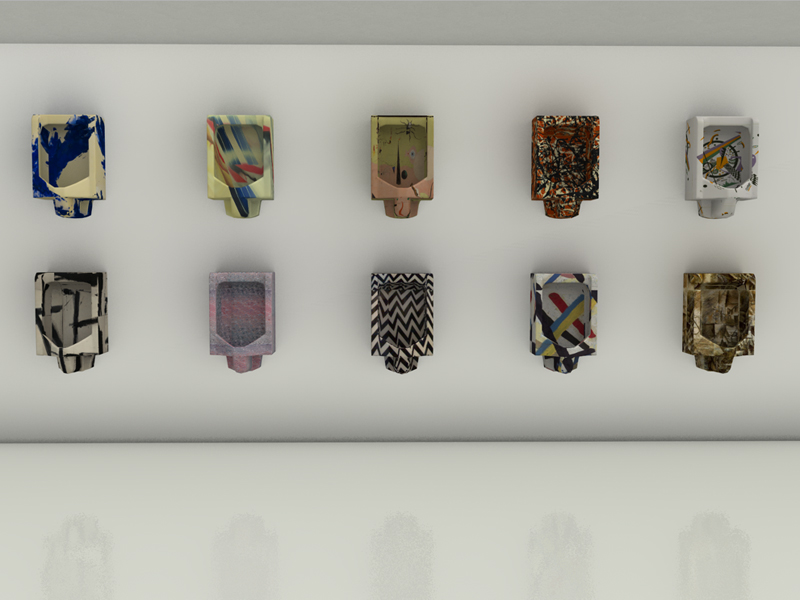
The gallery’s name Barmecidal, "providing only the illusion of abundance; illusory or imaginary and therefore disappointing," is manifest in the articulation of the virtual exhibition space. By mapping the traditional white cube onto a virtual model, Barmecidal Projects explores the modes of exhibition in both real and artificial space. Golby and Ross aspire to:
…bring together artists working in digital and immaterial forms. Digitally created works existing in the space are rendered in high-gloss, hyperrealistic fashion. Having these objects exist in the gallery space further blurs the boundaries between the Real and representation; the works will be so shiny and irresistible by virtue of their digital nature that they will supersede reality.
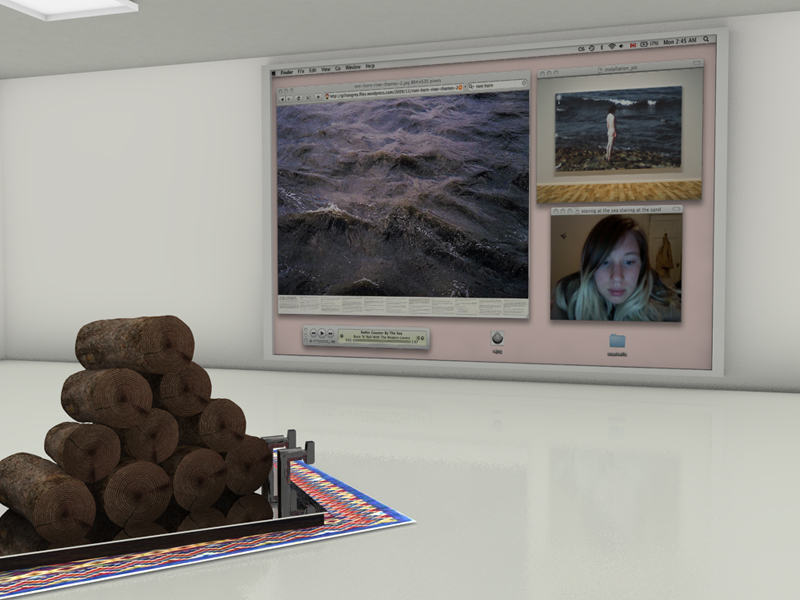
Due the technical limitations of the simulated model, visitors are unable to browse through the gallery freely and are lead through a video tour that moves quickly through the space. The experience of viewing the art in this context is both familiar and novel. The artifice of the simulated space reflects the artifice of the gallery as hallowed exhibition space.

Many of the works in the exhibition engage with the space's uncanny resemblance with the white cube. In Georgia Dickie's Fusilli (Turbo Blue), a giant piece of pasta floats or leans precariously against a virtual wall. Rendered in a bold shocking blue and with inconsistent shadowing, the virtual object exists in the uncomfortable sphere between two and three-dimensional representation.
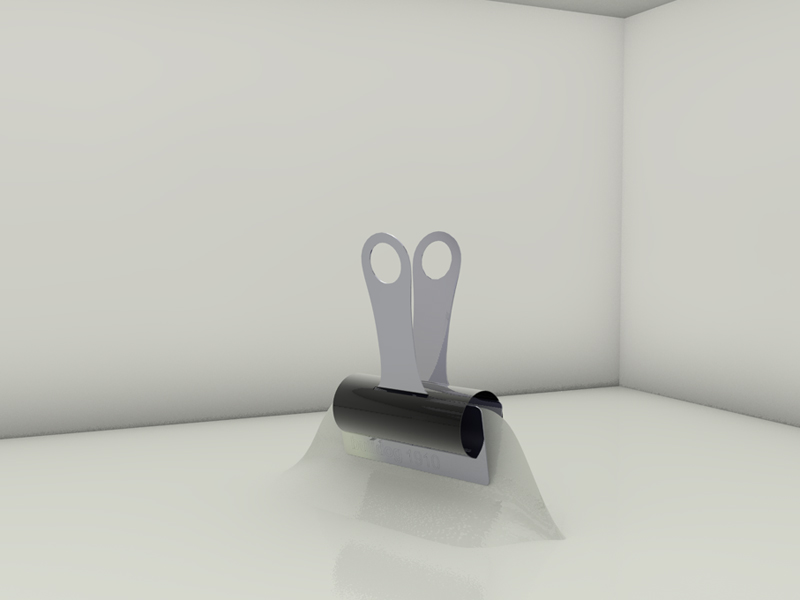
Similarly, Lee Ormerod’s Bulldog Clip #7 reminds us of the inherent malleability of a digital space that is not bound by physics or real world limitations.
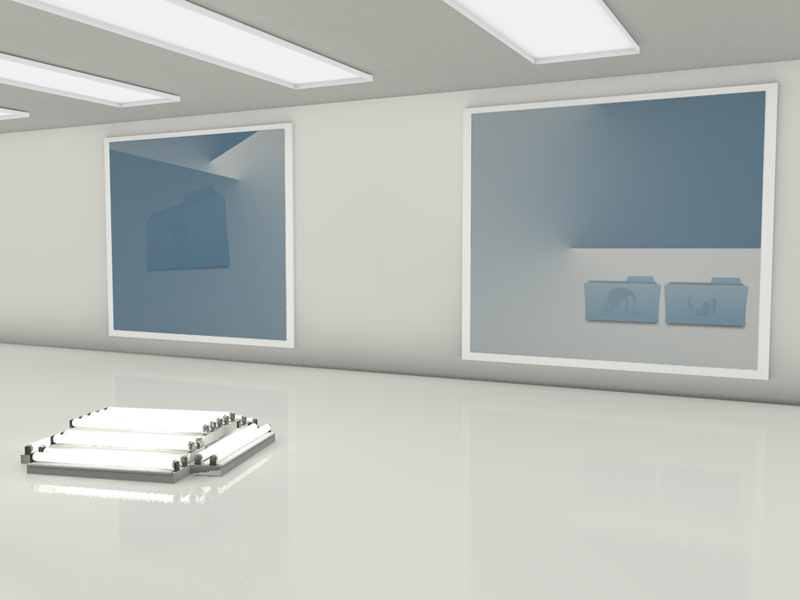
Other works, like Orlando Orellano's Explorer, approach the simulation of the gallery's physicality more literally, reflecting the walls and ceiling in the rendered glass of a framed print. Alex McLeod also reinforces the illusion of physical space in Haunted Memories, where simulated mirrored surfaces meticulously reflect the dimensions of the gallery.
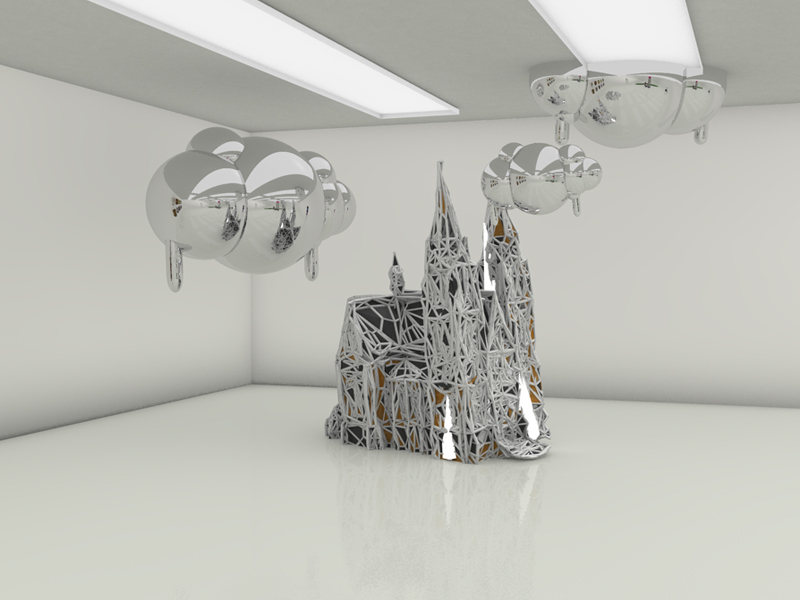
While Barmecidal Projects does not present itself as the solution to online exhibition, it is an interesting contribution to the discussion of digital curation and representation.

